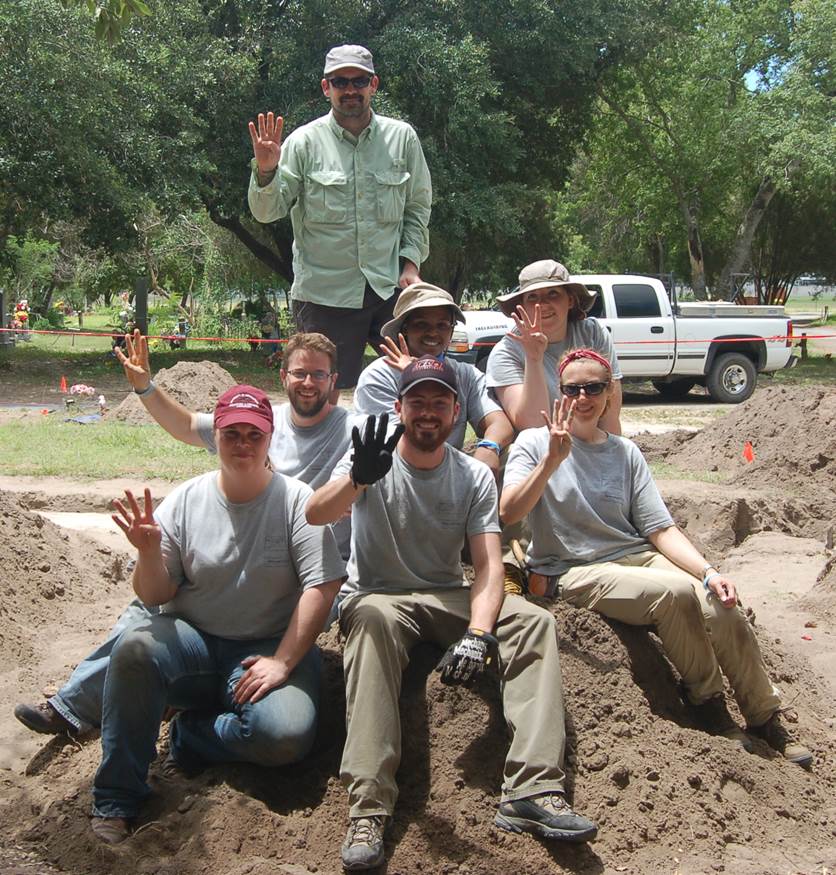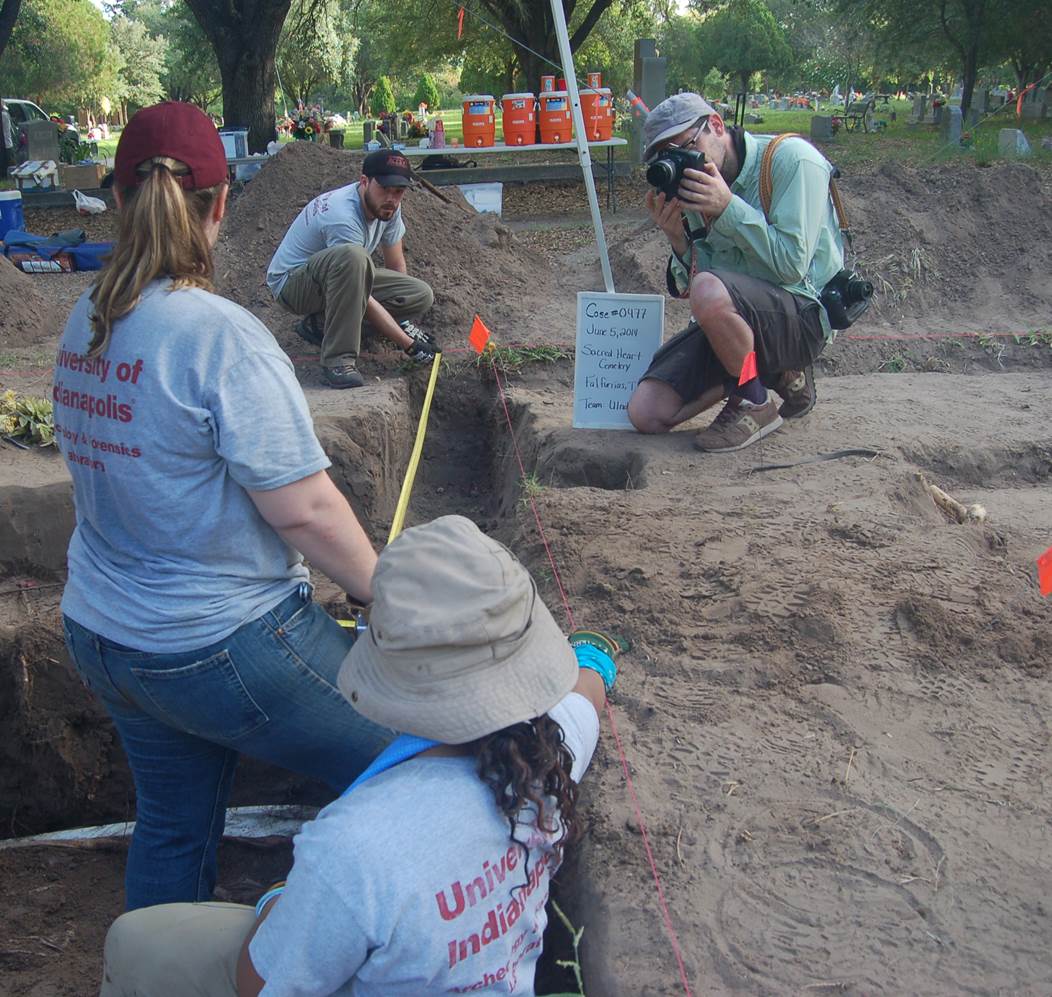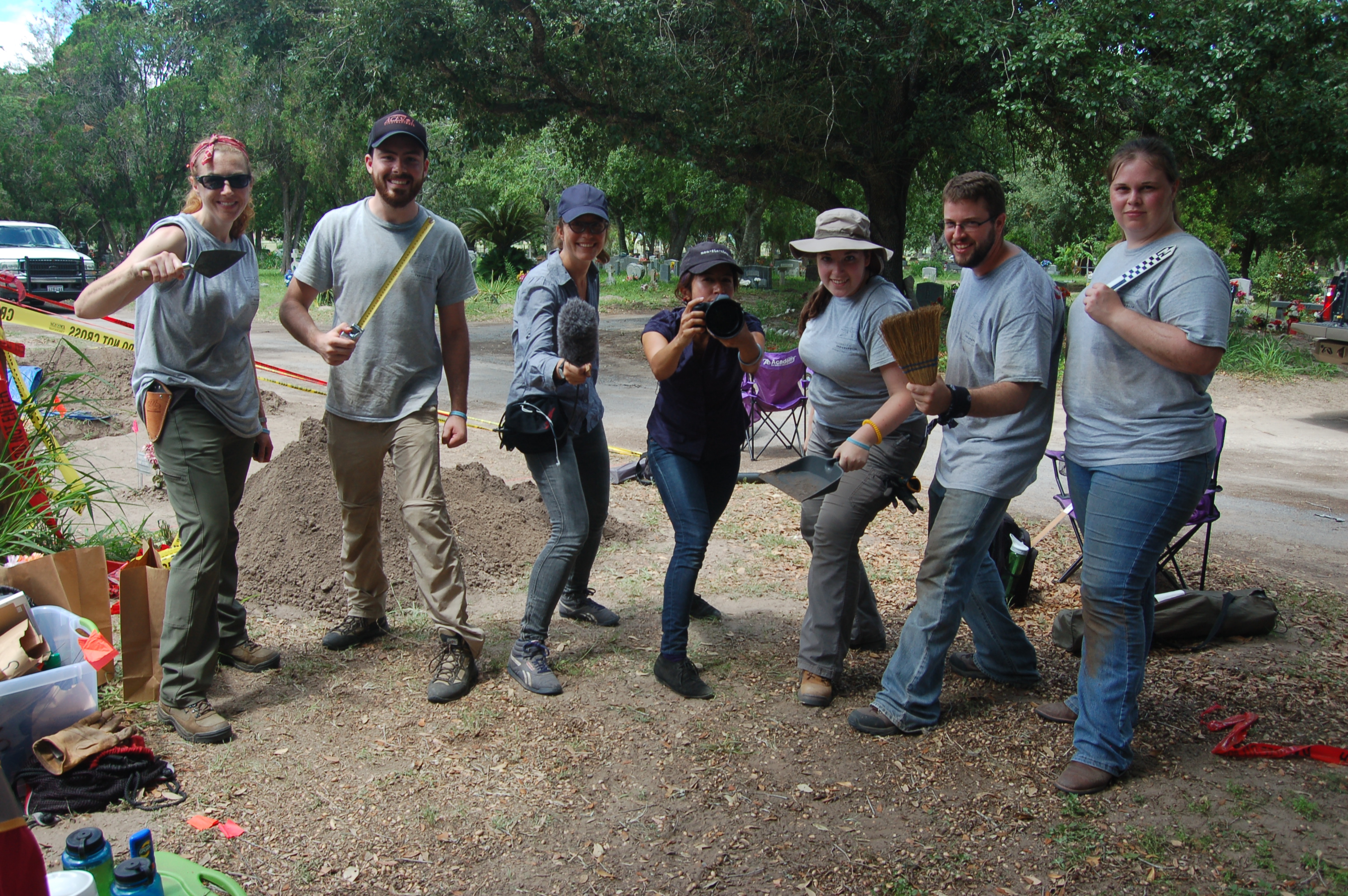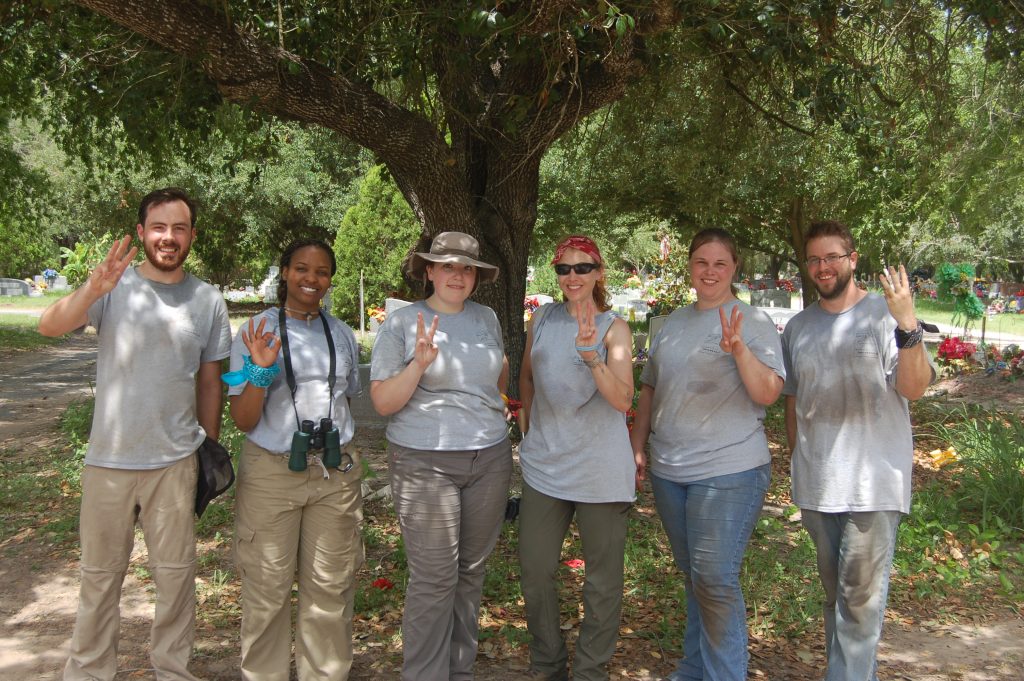 Day 4 has been such a full day that I don’t know where to begin! The heat and humidity are taking their toll on everyone. The Baylor team decided to make today an optional day to allow students to rest, which resulted in a smaller than usual crew at the cemetery. But instead of slowing down with less people to work, everyone went into high gear and made exceptional progress. The UIndy team did a lot of digging today. We also had a burial that tested our forensic archeological skills and was emotionally challenging. Not only was today a heavy work day, but it was filled with friends and adventures as well.
Day 4 has been such a full day that I don’t know where to begin! The heat and humidity are taking their toll on everyone. The Baylor team decided to make today an optional day to allow students to rest, which resulted in a smaller than usual crew at the cemetery. But instead of slowing down with less people to work, everyone went into high gear and made exceptional progress. The UIndy team did a lot of digging today. We also had a burial that tested our forensic archeological skills and was emotionally challenging. Not only was today a heavy work day, but it was filled with friends and adventures as well.
Our new friend Sarah Friedland, a documentary film maker, left today after being with us in the field from day one. Her co-director Esy Casey left yesterday. Our work will be part of their new film called “Memorials” (https://www.facebook.com/memorialsfilm). While the team and I have known them for just a few days we will forever be friends united by our experiences here in Falfurrias. This human rights mission and the experience of Sacred Heart Cemetery have the ability to bring people together in a way that very few other experiences do. We wish them the best and look forward to keeping in touch with them.
For the past two days Guy Housewright of Guy Housewright photography (http://www.guyhousewrightphotography.com/) has been with us at the cemetery. Guy is an old friend and amazing photographer that my university hired to capture our work in Sacred Heart. He embedded himself with us, beginning with breakfast at 5:15am and ending with debriefing and late dinners. He truly wanted to understand the issues and why we were doing the work here in Falfurrias. It was great to have him with us for two days and we hope he isn’t too exhausted after staying out in the hot sun with us. We also asked Guy be a part of our Day 4 picture (shown above). We can’t wait to see the images he took of us working and hope he was able to capture the emotions we feel at Sacred Heart Cemetery each day we are there.
 Ryan, Jessica and Cheneta had the opportunity to tour parts of El Tule Ranch today. The security manager of the ranch, Lavoyger Durham offered to take them to the ranch to see the type of environment the migrants journey through. Also traveling to the the ranch with them was Ananda Rose, author of “Showdown in the Sonoran Desert”. We’re going to tell you more about our time with Ananda tomorrow. I know Ryan, Jessica and Cheneta are very excited to talk about their adventures at El Tule, so I’ll stop here.
Ryan, Jessica and Cheneta had the opportunity to tour parts of El Tule Ranch today. The security manager of the ranch, Lavoyger Durham offered to take them to the ranch to see the type of environment the migrants journey through. Also traveling to the the ranch with them was Ananda Rose, author of “Showdown in the Sonoran Desert”. We’re going to tell you more about our time with Ananda tomorrow. I know Ryan, Jessica and Cheneta are very excited to talk about their adventures at El Tule, so I’ll stop here.
Finally, the day ended with an amazing diner and relaxing evening at Arturo’s house. His family invited our whole team over for an evening of amazing food, dancing, singing and fun.
~KEL


